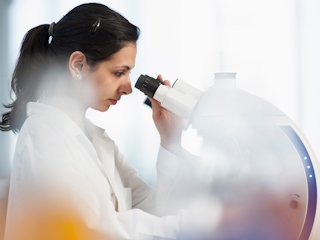“Innovation needs Waste” was the title of a conference talk that Pierluigi Pugliese and I delivered together about 10 years ago in 2011/12. We introduced Design Thinking in the Agile Community. Our point was that the Agile Community must extend their practices to create the right product, and not just to do things right. Since then, Agile Thinking and Design Thinking are often topics that go well together. They have a lot in common but there are also differences.
Experiment and Learn
The title “Innovation needs Waste” highlighted quite well a contradiction. Design Thinking embraces experiments and prototyping to learn about the best problem-solution fit. Some ideas are good and will be concluded, others are a dead end. As a consequence, the experiments or the prototypes may be thrown away. They are superficially waste.
But in the corporate world, the mindset of experimenting is often associated with unprofessional behaviour. Trail-and-error is for people who don’t know what they want. Professionals are efficient. They strive for convergence, to make decisions. Economical constraints, like tight budgets, are a driving force behind this thinking. “One should not waste resources.”
Well Oiled Machine
That’s why it’s so challenging to foster an innovation culture in the corporate world. Our efficiency thinking is blocking us from wasting time and money for experimenting—a core activity in Design Thinking. The main metaphor that describes our organisations today is the “well oiled machine.” Every piece in the machine fits, no slack is possible, no variability wanted.
Another topic is diversity—a necessary ingredient for creativity. The mindset of running a “well oiled machine” is also not helpful for fostering diversity. Why? Diversity within an organisation would create contradictions, these lead to the emergence of new ideas. But contradictions require also more attention to keep the organisation stable. This is a challenge for the leadership. Hence organisations are implicitly optimised to avoid contradictions and there is the urge to hire people that will fit better in the “well oiled machine.”

Culture Transformation
These two points show us that to become more innovative, e.g. by applying Design Thinking practice, a lot of the invisible parts—mindset, beliefs, values—needed to grow. Adopting Design Thinking, and therefore having an innovation culture, is by nature a culture transformation. Culture cannot be changed directly. But there are structures, policies and processes that you can influence. Every organisation is different. Apply System Thinking to understand what needs to be changed to move the behaviour of the organisation into the right direction.
In order to understand the complexity of a culture transformation, I recommend looking at Wilber’s four quadrant model. It associates the organisational culture with the individual beliefs and mindset, the behaviour of people and the organisational system composed of structures, processes and practices. Change agents can use the model to design interventions that bring the complex organisational system forward into the direction of a more innovative culture.

The approach for the change needs to be iterative. Since we are influencing a complex system, we must continuously probe, sense and respond (see Cynefin framework). Using Wilber’s model, we can brainstorm in an interdisciplinary team to come up with ideas for interventions. Selected interventions will be introduced. How the organisation responds must be monitored to learn and adapt the intervention. You must experiment and learn. But how can you apply something that you want just to adopt? It’s a chicken and egg problem. That’s why it’s recommended to get external help.







